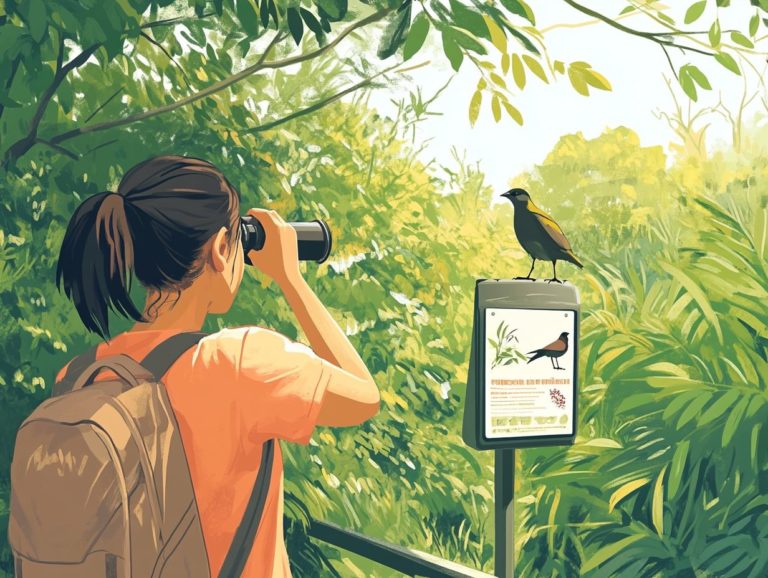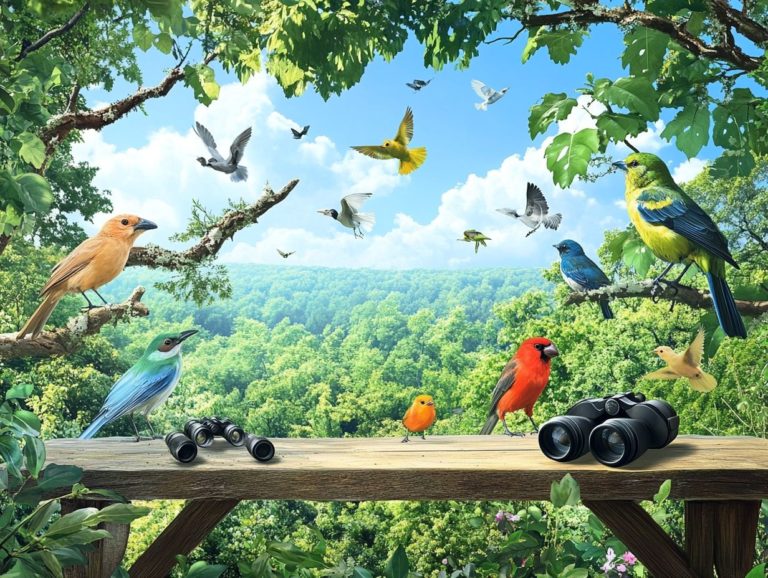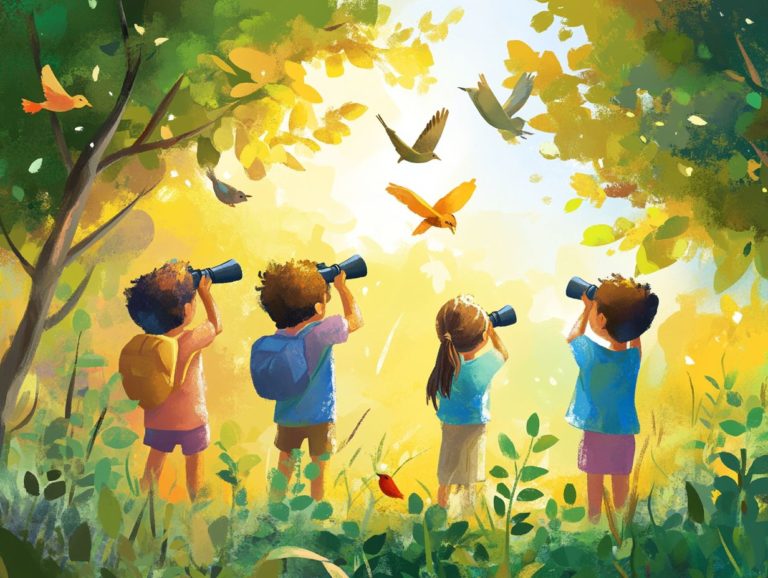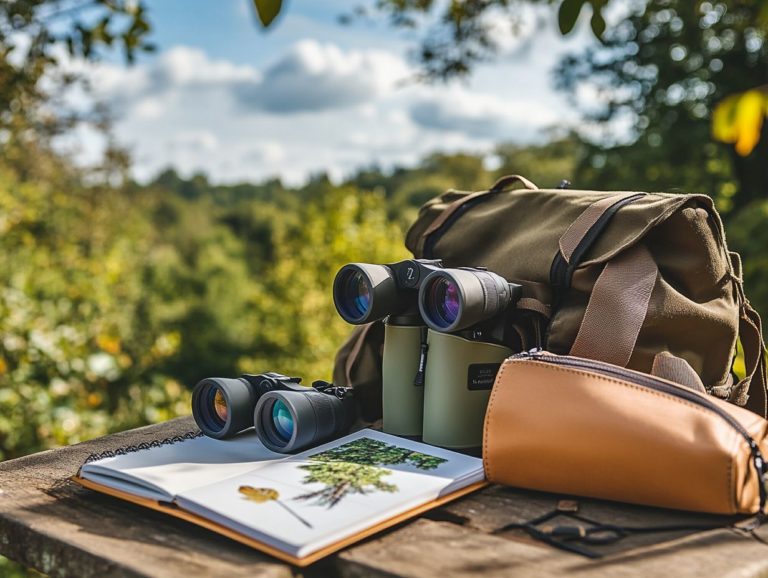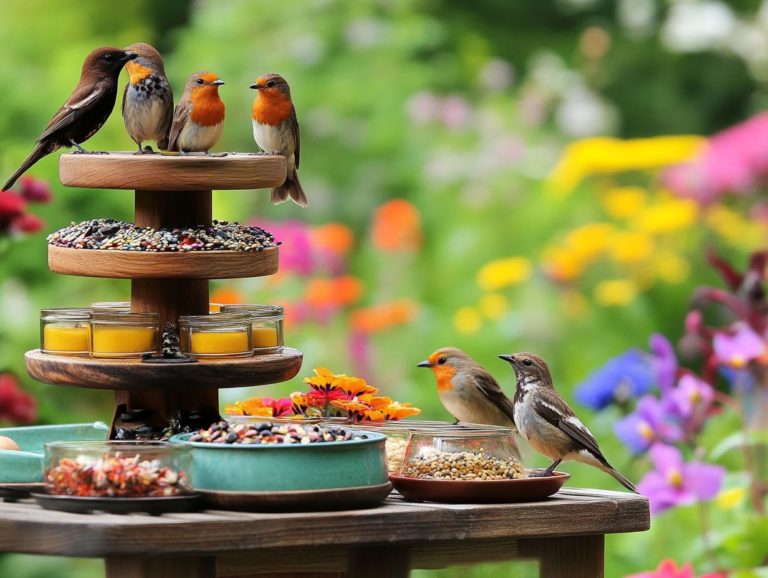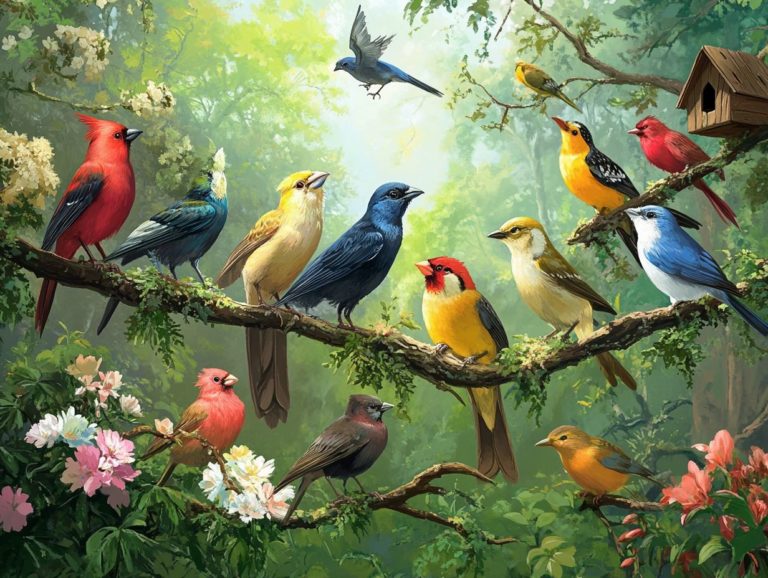What Equipment is Essential for Bird Watching?
Bird watching is a captivating hobby that invites you to connect with nature and explore the beauty of avian life. Whether you re a seasoned birder or just dipping your toes into this delightful pursuit, having the right equipment can significantly enhance your experience.
From important tools like high-quality binoculars, including Celestron and Nikon, to comprehensive field guides and practical items like comfortable clothing and insect repellent, this guide has everything you need to unlock exciting birding adventures!
Discover the must-have gear that will elevate your birding outings and make them truly unforgettable!
Contents
- Key Takeaways:
- 1. Binoculars
- 2. Field Guide
- 3. Spotting Scope
- 4. Birding Journal
- 5. Camera
- 6. Tripod
- 7. Bird Call Recorder
- 8. Comfortable Clothing and Shoes
- 9. Insect Repellent
- 10. Sun Protection
- 11. Water and Snacks
- 12. Birding Backpack
- 13. Compass and Map
- 14. First Aid Kit
- 15. Birding Apps
- Frequently Asked Questions
- What Equipment is Essential for Bird Watching?
- What type of binoculars are best for bird watching?
- Do I need a field guide for bird watching?
- What type of clothing and footwear should I wear while bird watching?
- Are there any other essential equipment for bird watching?
- Can I go bird watching without any equipment?
Key Takeaways:
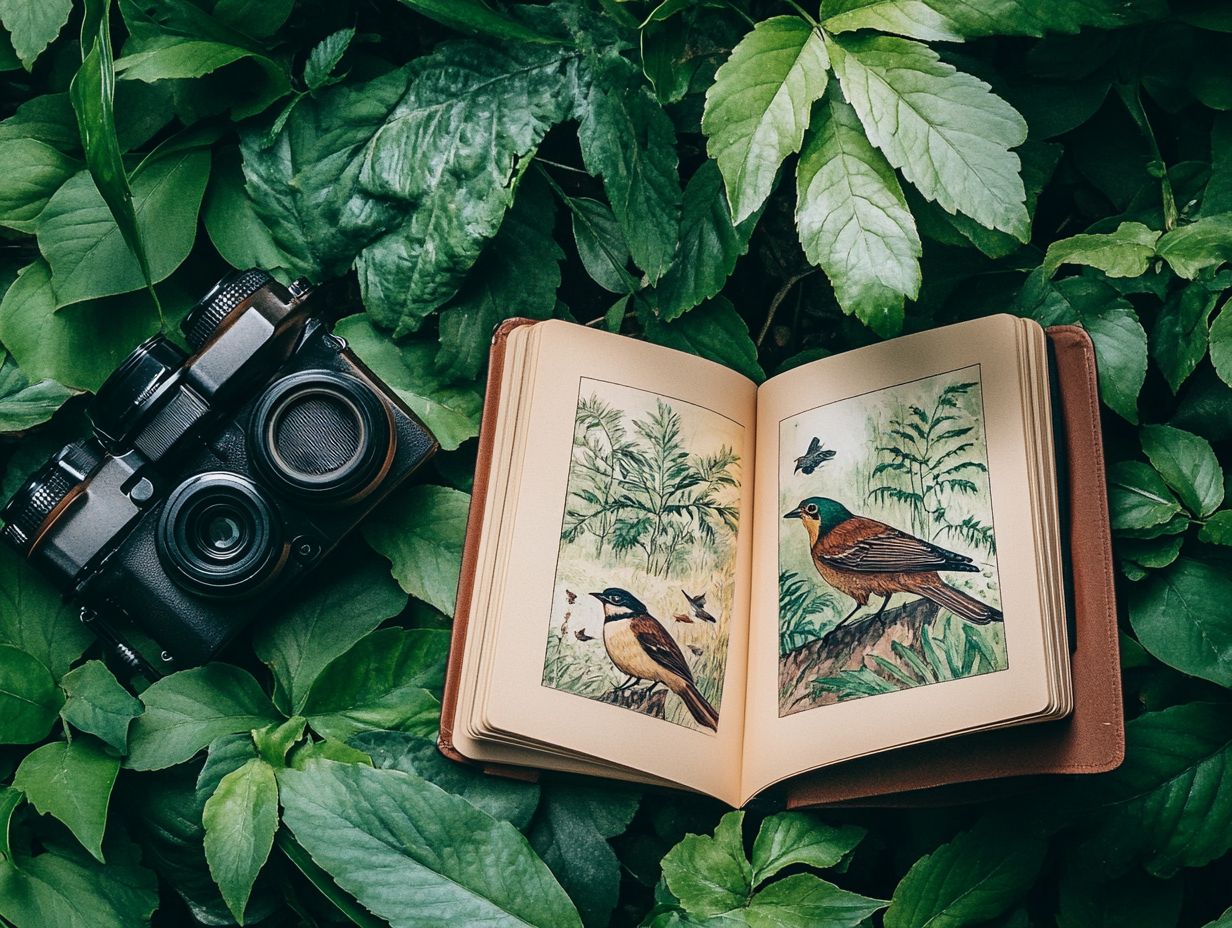
- Invest in a quality pair of binoculars for a closer look at birds without disturbing their natural habitat.
- Bring a field guide for identifying and learning about the birds you encounter on your bird-watching trip.
- Consider a spotting scope for long-distance viewing of birds and their behavior in their natural environment.
1. Binoculars
When you embark on a bird-watching trip, choosing the right binoculars is essential for the best viewing experience. Quality lenses will elevate your journey, making it easier to identify various species and observe their behaviors.
Consider top-tier options that offer clarity and precision, catering to everyone from novice birders to seasoned enthusiasts. With the right binoculars in hand, participating in events like the Great Backyard Bird Count and connecting with the birding community becomes an even richer experience.
Investing in binoculars with the right magnification typically between 8x and 10x allows you to get a closer look at distant birds without sacrificing image stability. Lens quality plays a significant role in delivering bright and sharp visuals, especially during those magical moments at dawn or dusk.
Waterproof capabilities are important; they protect your equipment from unexpected weather changes, ensuring durability in multiple environments. Personal preferences regarding weight, size, and ergonomics should also guide your decision-making process. Finding the perfect pair tailored to your individual birding journey will make all the difference.
2. Field Guide
A reliable field guide is an important tool for you as a birder. It serves as a comprehensive resource for bird identification and nurturing a deeper appreciation for avian species and their habitats. Renowned guides like the Sibley Guide, Kaufman Field Guide, and Audubon Bird Guide offer crucial insights into distinguishing between similar species while helping you understand their behaviors, ranges, and calls.
These guides feature stunning illustrations to aid in visual identification and include range maps that show where certain species are likely to be found throughout the year. For example, the Sibley Guide is celebrated for its detailed artwork and in-depth descriptions, while the Kaufman Field Guide shines with its user-friendly layout tailored for both novices and seasoned birders.
When you venture out into the field, familiarize yourself with these guides in advance. By using them to narrow down potential sightings in specific habitats and quickly comparing features in real-time, you can significantly enhance your overall bird-watching experience. Additionally, consider exploring online resources or apps for field identification during your outings.
3. Spotting Scope
A spotting scope can be an invaluable addition to your birding gear! It offers superior magnification and clarity for distant observations, making it perfect for spotting elusive species or observing birds in hard-to-reach areas. Whether you’re a casual birdwatcher or a dedicated ornithologist, a quality spotting scope beautifully complements your binoculars and enriches your birdwatching experience.
This powerful optical device boasts high magnification power, often ranging from 15x to 60x. This allows you to see even the most intricate details of a bird’s plumage from several hundred yards away. The quality of the lens is crucial, delivering sharp, bright images with excellent color fidelity. This makes identifying different species a breeze!
Portability is another fantastic feature! Many modern spotting scopes are lightweight and compact, making it easy for you to transport them during long treks in search of rare birds. For the best experience, set up your scope on a sturdy tripod; this allows for stable, hands-free observation.
As you focus on a bird’s behavior and movements through the spotting scope, you ll find that it significantly enhances your experience. It opens a window into their world that binoculars alone may not provide!
4. Birding Journal
Maintaining a birding journal is a rewarding endeavor! It allows you to document your observations and track the species you’ve identified. You can reflect on your personal experiences in the field, including your adventures with tools like the bird buddy and trail camera. This invaluable tool not only aids in bird identification but also contributes to citizen science initiatives like the Great Backyard Bird Count, organized by the Cornell Lab of Ornithology. It helps you forge a deeper connection to the avian world!
By recording detailed entries, both novice and seasoned birders can significantly enhance their identification skills. Each entry captures the species observed, the date, location, weather conditions, and any unique behaviors noted during your sightings. Structuring your journal with sections for seasonal migrations helps track patterns over time. This transforms the act of logging observations into a proactive way to engage with nature!
To enrich your experience, incorporate sketches or photographs and share your findings with fellow enthusiasts online! This can elevate a simple record into a vibrant narrative of personal growth and discovery. Use tips like setting specific goals for each birding trip to turn your journaling process into an exciting adventure!
5. Camera
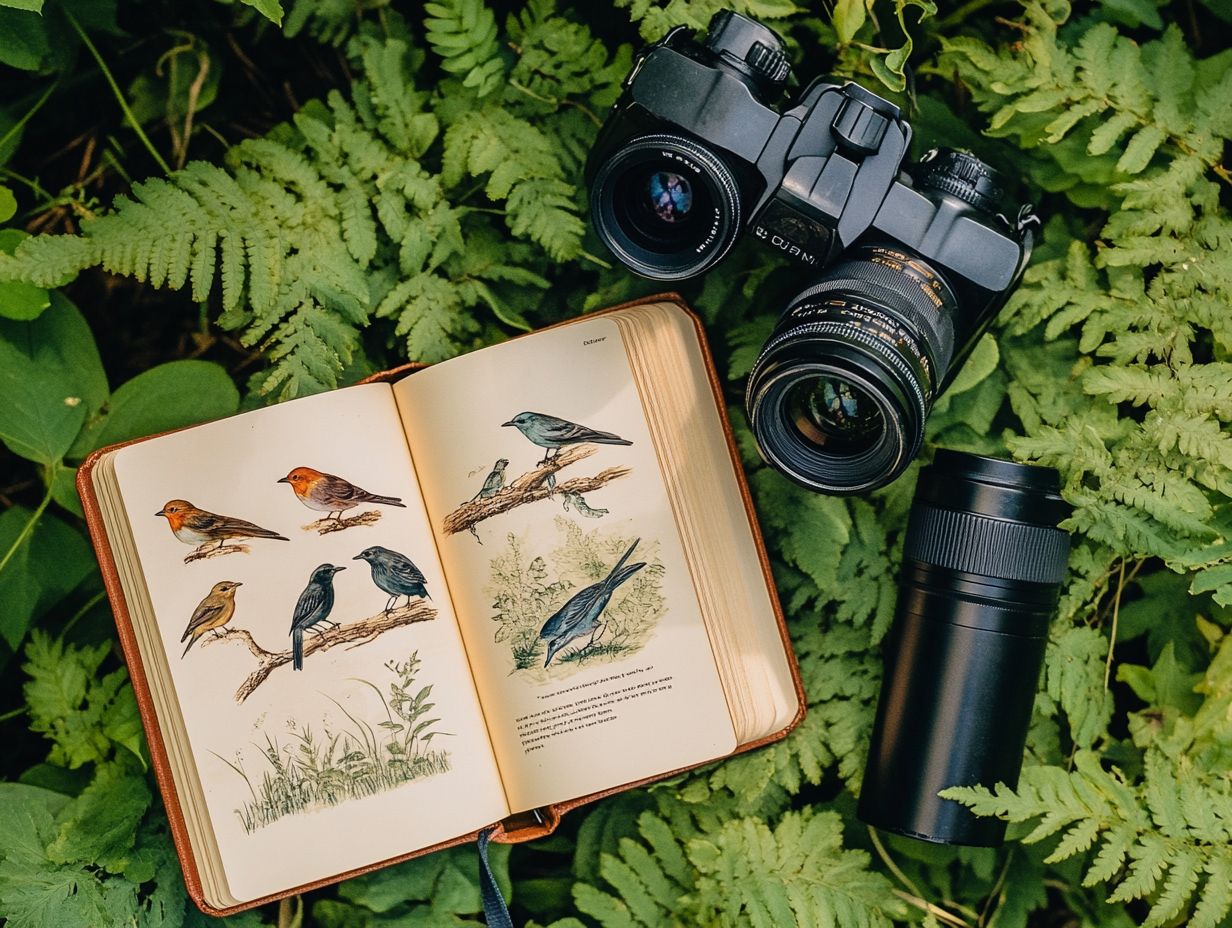
Capturing the beauty of birds through photography elevates your birdwatching experience! It allows you to document your moments and share them with the broader birding community. Whether you re wielding a dedicated camera or using smartphone telephoto lenses, grasping the fundamentals of bird photography can significantly enhance your outings.
The right equipment is essential for capturing breathtaking images. Investing in a high-quality DSLR (a type of camera that captures high-quality images) or mirrorless camera paired with a long telephoto lens (a lens that helps you zoom in on birds from far away) creates the perfect setup for capturing intricate details from a distance without disturbing the wildlife!
Understanding lighting conditions and mastering composition can transform a simple snapshot into a striking photograph. Remember, patience is key! Taking the time to observe bird behavior and their habitats enables you to anticipate moments of action, leading to stunning shots that truly embody the essence of these magnificent creatures.
This blend of skill and mindfulness not only enriches your personal experiences but also deepens your appreciation for the avian world. Don t miss out on the chance to see these amazing birds!
6. Tripod
A sturdy tripod is an essential piece of your birding gear. It offers the stability you need to effectively use both spotting scopes and cameras especially during those long viewing sessions. With a reliable support system, you can enjoy clearer, sharper images and greater comfort, significantly enhancing your bird-watching experience.
This level of stability tackles the all-too-common problem of shaky hands, which often turns the quest for that perfect photograph or detailed observation of a distant species into a frustrating endeavor. A solid tripod can also reduce physical fatigue, allowing you to immerse yourself in your surroundings without the constant need to adjust your equipment.
When selecting the ideal tripod, consider a few key factors:
- Weight for easy transport
- Height for comfortable viewing angles
- Material durability to withstand varying weather conditions
Opt for a lightweight aluminum or carbon fiber tripod to enjoy the ultimate balance of portability and stability. This will make your birding outings all the more enjoyable.
7. Bird Call Recorder
A bird call recorder is a vital tool for bird watchers, helping you capture and analyze the songs and calls of various species. This tool helps you identify birds and enjoy the experience more.
Thanks to technological advancements, many smartphone apps now feature this functionality. These enable you to participate in initiatives like the Great Backyard Bird Count while deepening your understanding of avian communication.
Utilizing a bird call recorder can markedly improve your identification skills. You can focus on the subtle nuances of different calls, leading to more accurate identifications in the field and enriching your appreciation for the intricate behaviors of birds.
Many apps offer analytical features, including visual tools that show sound frequencies, making it easier for you to identify individual species.
To maximize the benefits of these tools, practice in various habitats, pay close attention to the context of calls, and review your recordings at different times. This approach allows you to correlate vocalizations with behaviors during breeding seasons or migratory periods, elevating your bird-watching to new heights.
8. Comfortable Clothing and Shoes
Wearing comfortable clothing and the right hiking boots is essential for elevating your birding experience. This allows you to immerse yourself in observing birds without the nagging distractions of discomfort. Investing in high-quality, waterproof hiking boots and breathable layers can significantly enhance both your mobility and enjoyment during outdoor excursions.
Choosing the right attire facilitates movement across various terrains and offers protection against unpredictable weather conditions, ensuring you stay comfortable throughout your adventures.
Layering is crucial; opt for moisture-wicking fabrics to stay dry. A lightweight, weather-resistant jacket can shield you from unexpected rain or gusts of wind. Don t forget about sun protection; wide-brimmed hats and light gloves provide excellent coverage.
Footwear is pivotal too. Sturdy shoes with good traction help prevent slips on uneven ground, enhancing your safety and allowing you to venture on longer, more adventurous treks with confidence.
9. Insect Repellent
Insect repellent is an essential companion for any birding expedition. It keeps you bite-free so you can focus on the thrill of birdwatching! By selecting effective insect repellents, you can immerse yourself in your observations without the distraction of pesky insects.
In particularly humid regions and during the warmer months, the onslaught of mosquitoes and ticks can feel overwhelming. These unwelcome visitors not only bring irritation but can also carry diseases that pose serious health risks.
Fortunately, you have various insect repellent options at your disposal, from sprays and lotions to wearable devices. For optimal protection, it s wise to choose products that contain DEET, picaridin, or oil of lemon eucalyptus.
Each option offers varying levels of protection. Take a moment to assess your environment and the duration of your exposure to make an informed choice. Being well-prepared can significantly elevate your birding experience.
10. Sun Protection
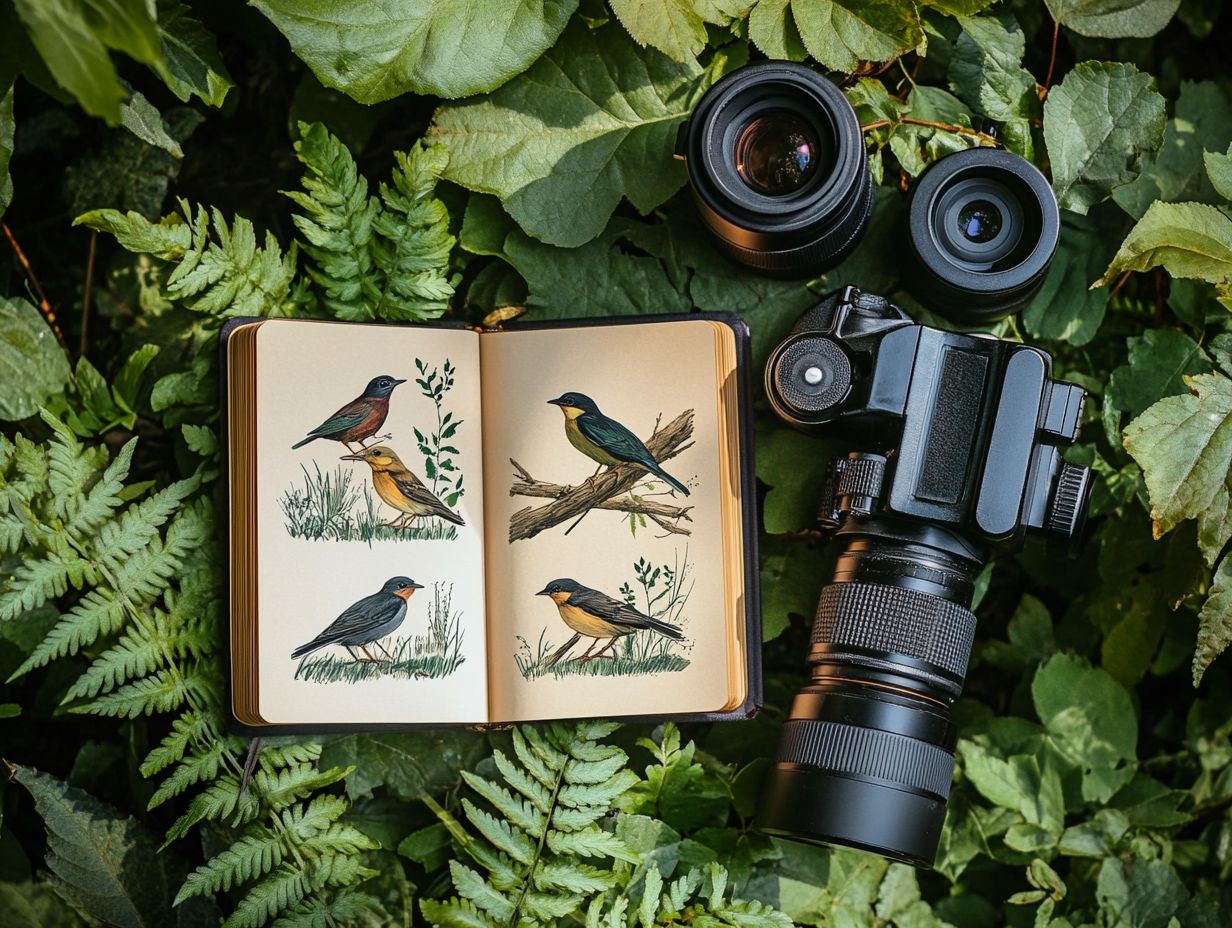
Proper sun protection is essential for birders spending hours outdoors. It significantly reduces the risk of sunburn and long-term skin damage while you indulge in the beauty of nature.
By utilizing high-SPF sunscreen, hats, and sunglasses, you can greatly enhance your comfort and safety during your bird-watching adventures.
Choose sunscreen that protects against both UVA and UVB rays with an SPF of at least 30. Don t forget to reapply sunscreen every two hours, especially after sweating or swimming.
Opt for lightweight, breathable clothing think long-sleeved shirts and wide-brimmed hats to provide extra coverage without sacrificing comfort.
When planning outings during peak sun hours, typically between 10 a.m. and 4 p.m., look for shaded spots to stay cool.
By prioritizing sun safety, you not only elevate your bird-watching experience but also invest in your long-term health, ensuring countless more hours spent delighting in the avian world.
11. Water and Snacks
Staying hydrated and energized is crucial during long birding trips. Pack enough water and healthy snacks to maintain your focus and enjoyment while observing wildlife.
Proper hydration and nourishment boost your stamina, leading to a more rewarding bird-watching experience.
Beyond plain water, consider adding electrolyte-infused beverages to your pack. They can help replenish lost minerals, especially on sweltering days.
Healthy snacks like trail mix, energy bars, or fresh fruits provide the fuel you need without weighing down your gear.
When deciding what to bring, aim for items that are easy to pack and consume. This ensures quick access when hunger strikes.
Use resealable bags for your snacks; they make convenience a breeze and prevent unfortunate spills. Choose a water bottle with an easy-to-use spout to streamline your hydration efforts.
This smart prep keeps your energy up and lets you dive into nature’s beauty!
12. Birding Backpack
A well-designed birding backpack is essential for carrying your must-have gear while staying organized on your outings. A good backpack holds everything you need, from binoculars to snacks.
When searching for the perfect birding backpack, size matters. You want enough space to fit everything without it becoming cumbersome. Multiple compartments enhance your organization, giving dedicated spots for quick access to items like your camera or notepad.
Comfort should be a top priority; padded straps and breathable materials make long hours in the field much more enjoyable.
Being able to grab your essential gear without unzipping the entire bag creates a seamless birding experience. This helps you stay focused on the wonders of nature instead of rummaging for equipment.
13. Compass and Map
Equipping yourself with a compass and map is essential for navigating unfamiliar territories while bird-watching. This preparation keeps you oriented and allows you to safely explore new habitats.
Mastering the art of reading a map and using a compass empowers you to uncover hidden gems and diverse avian species in remote locations.
These tools are especially crucial when venturing into less developed areas, where GPS signals may falter or your smartphone battery might drain unexpectedly.
Familiarize yourself with different map types, such as topographic maps, which reveal elevation changes and help you understand the terrain.
When using a compass, don t overlook the importance of declination (the difference between magnetic north and true north in your region). Setting clear waypoints can streamline your navigation.
This way, you can focus on spotting that elusive species instead of worrying about getting lost.
14. First Aid Kit
A first aid kit is a must-have in your birding gear, providing peace of mind by ensuring you’re ready for any minor emergencies or injuries that might pop up during your outdoor adventures. With the right supplies at your fingertips, you can address issues quickly and efficiently, allowing you to keep enjoying your day.
For a well-stocked kit, consider including:
- Adhesive bandages for those pesky cuts and scrapes
- Antiseptic wipes to clean up wounds
- Tweezers to gracefully extract any splinters
A few pain relievers can be invaluable for easing headaches or muscle soreness after an invigorating trek. When an injury strikes, knowing how to assess and treat it can turn a potential setback into nothing more than a minor inconvenience.
Grasping basic first aid techniques not only makes birding more enjoyable but also gives you the power to explore new areas with confidence, free from worry.
15. Birding Apps
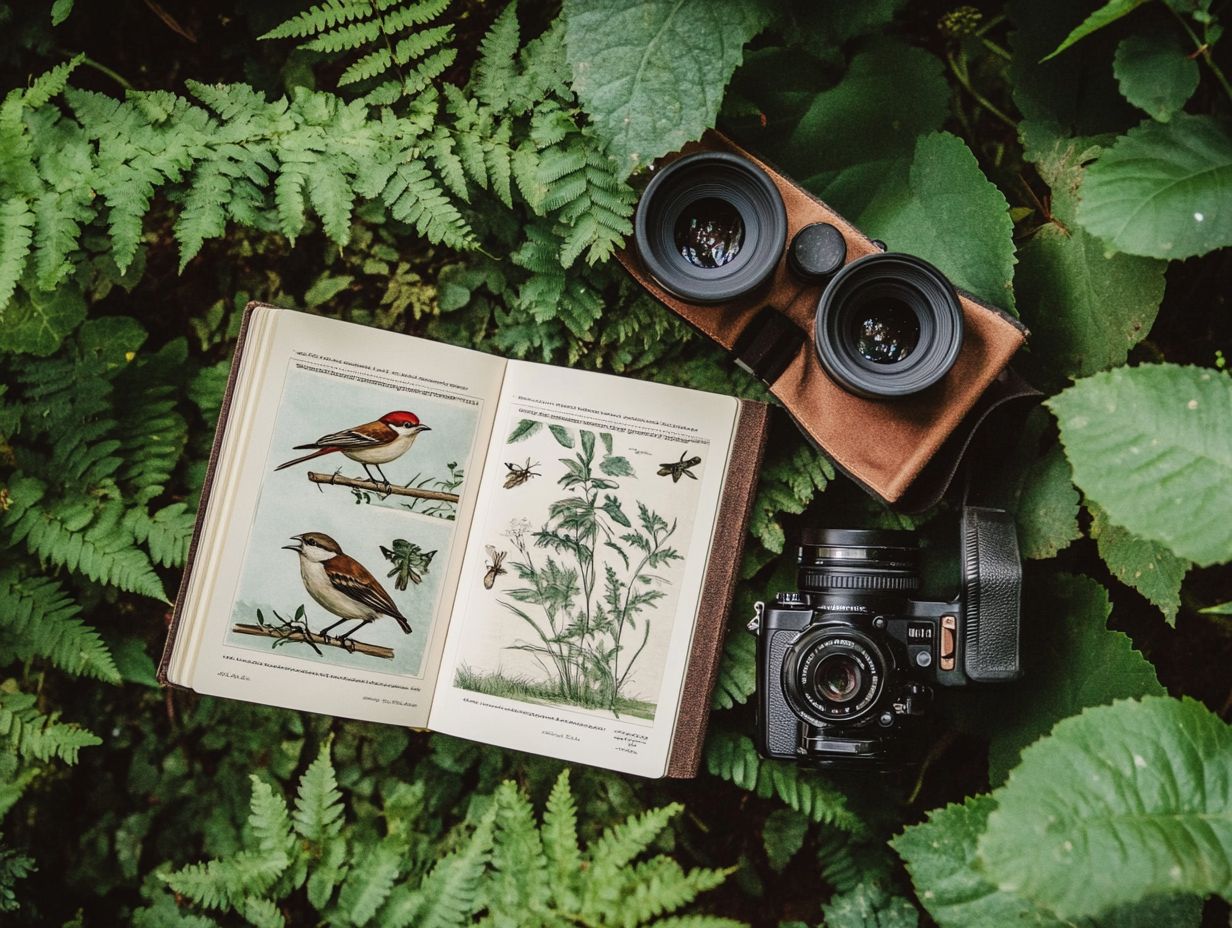
Birding apps have truly transformed the way you engage with this fun hobby, offering you instant access to bird identification resources, field guides, and real-time data to track various species. With applications like Merlin Bird ID and other smartphone tools at your fingertips, you can immerse yourself more deeply in the experience, sharpen your skills, and even contribute to exciting citizen science projects. These projects involve everyday people in real scientific research.
These tools help you recognize different bird species easily simply upload a photo or answer a few questions about your sighting, and you re good to go. Many of these apps come equipped with a library of bird calls, enhancing your auditory learning and making it easier to locate those elusive species by sound.
These apps let you engage with a community; you can share your observations, take part in local challenges, and connect with fellow bird enthusiasts. Popular options like eBird not only help you track your sightings but also contribute vital data to conservation efforts nationwide, enriching your overall birding experience in ways you might not have imagined.
Frequently Asked Questions
What Equipment is Essential for Bird Watching?
There are a few essential pieces of equipment that every bird watcher should have for a successful and enjoyable experience. These include binoculars, a field guide (a book that helps you identify birds), and what to look for in bird watching gear, including appropriate clothing and footwear.
What type of binoculars are best for bird watching?
When choosing binoculars for bird watching, such as the Celestron binoculars or Nikon Monarch M5, consider factors such as magnification, field of view, and weight. Ideally, look for binoculars with a magnification of 8x or 10x, a field of view of at least 300 feet, and a weight that is comfortable for you to carry around.
Do I need a field guide for bird watching?
Absolutely! A field guide, like the Sibley Guide or Kaufman Field Guide, is an essential tool for identifying different bird species. Look for a guide that is specific to your area and includes clear pictures and descriptions of the birds you are likely to encounter.
What type of clothing and footwear should I wear while bird watching?
It is important to dress appropriately for the weather and terrain you will be bird watching in. Comfortable, waterproof hiking boots, lightweight clothing, and sturdy shoes are a must. It is also helpful to wear neutral colors to blend in with your surroundings and avoid startling the birds.
Are there any other essential equipment for bird watching?
In addition to binoculars and a field guide, you may also want to consider bringing a waterproof notebook and pen to take notes, a camera backpack to capture any unique sightings, and smartphone apps like Merlin Bird ID or Haikubox to attract birds.
Can I go bird watching without any equipment?
While it is possible to go bird watching without any equipment, it is highly recommended to have at least the basic essentials mentioned above, including bird feeders and binoculars. Without binoculars and a field guide, it may be difficult to identify and observe birds in their natural habitat. To enhance your experience, you can refer to this guide on what to keep in your bird watching backpack and gradually add more items, such as birding apps and hiking tips, as you continue bird watching.

